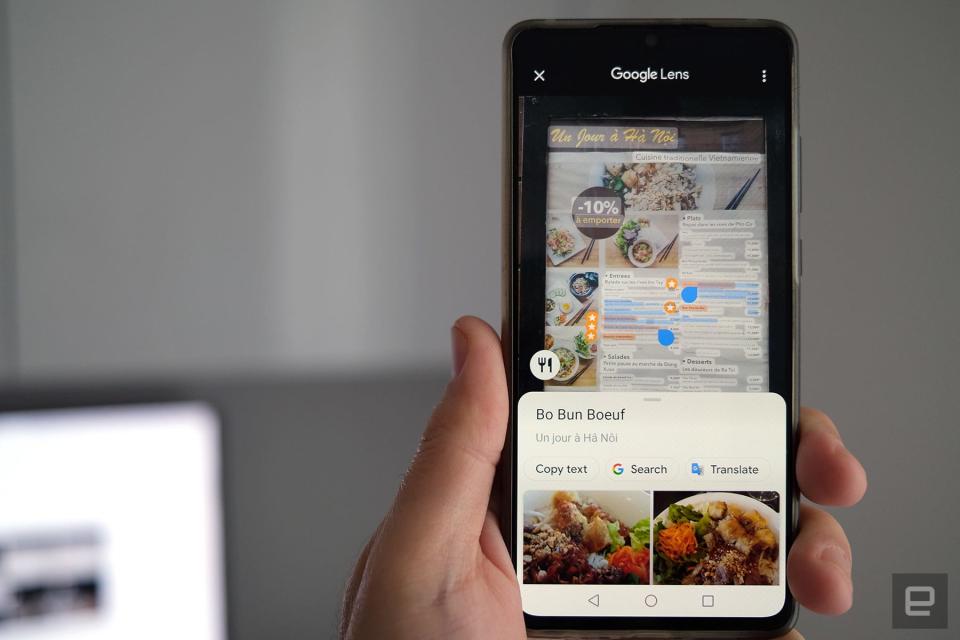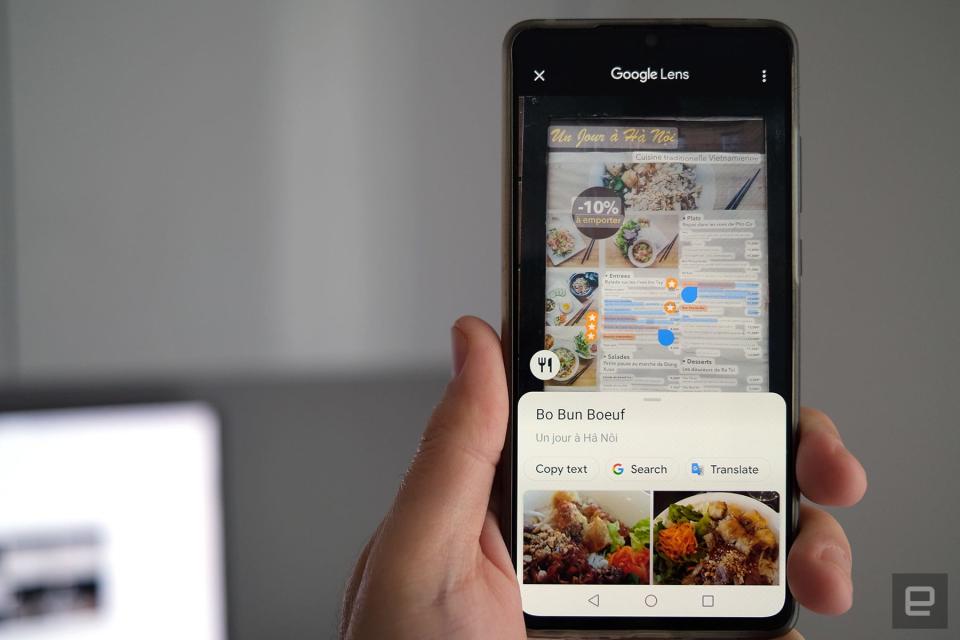Google Maps borrows Lens tech to highlight popular restaurant dishes
A virtual overlay show plate descriptions and pricing.
Google introduced big changes to Lens at its I/O conference last year by turning your phone's camera into a powerful search tool. With one of the key features, you could point your camera at a restaurant menu and it would highlight the most popular dishes and even translate menu items. Now, Google has made that feature much more useful in Google Maps by cleverly sourcing menu photos taken by restaurant customers, 9to5Google reported.
For instance, if you search for "restaurants" in Maps, Google will present a list of them in your neighborhood, along with the usual "menu" overlay. When you tap on that, it'll bring up photos taken by customers (if available), along with a suggestion chip labeled "explore dishes." Tapping on that brings up Google lens, which shows a list of highlighted, starred dishes gleaned from reviews.
Tapping on a given item will show the dish, along with pictures also taken by customers. You can then choose to search for that dish to see what it is, or use Google Translate to display it in your native language.
The feature shows how Google is starting to connect multiple features and apps to improve the user experience. It lets you leap from a restaurant search in Maps over to Lens, which in turn draws on user photos and review information from Maps. It can then automatically open Translate if need be. The "explore dishes" feature started rolling out to Android yesterday evening, so it should arrive to your own smartphone in due time.

 Yahoo Finance
Yahoo Finance 

